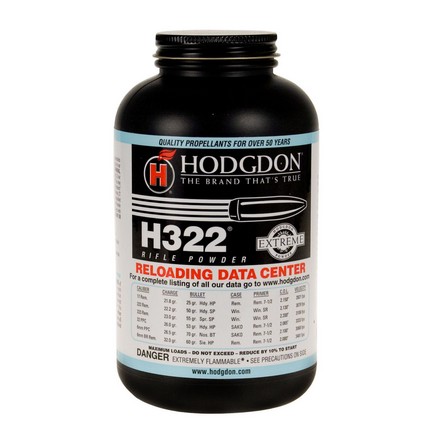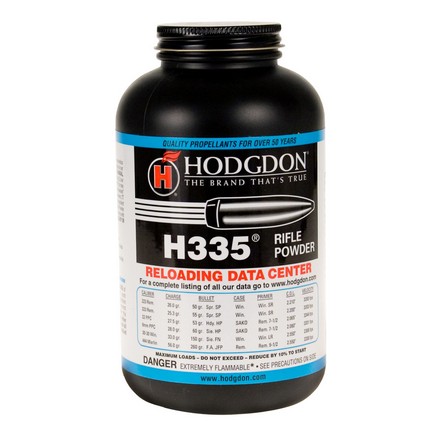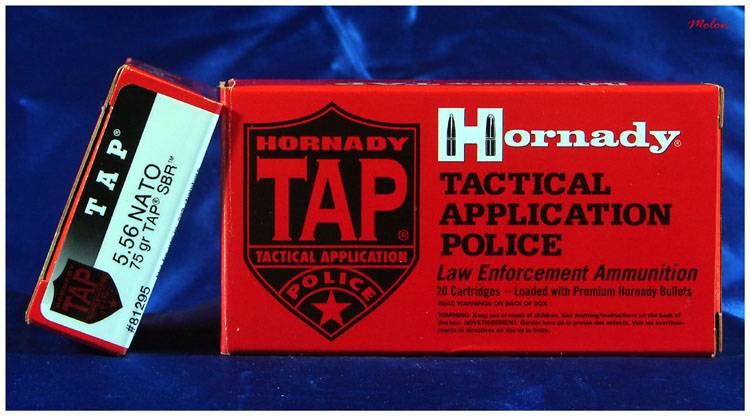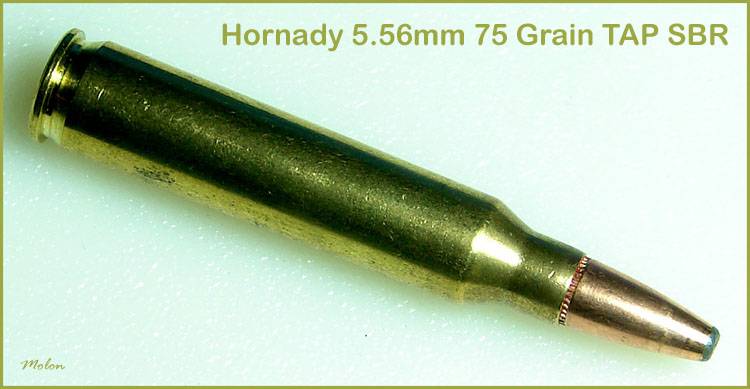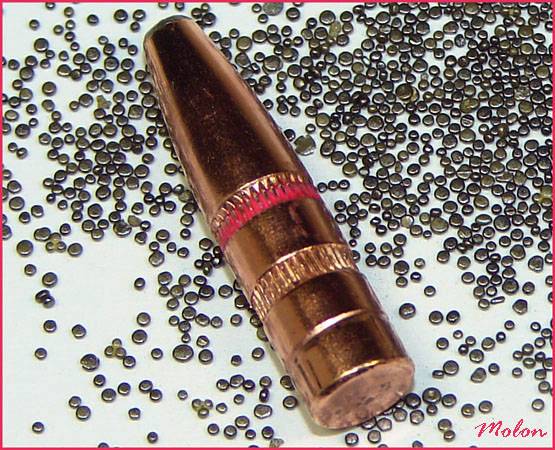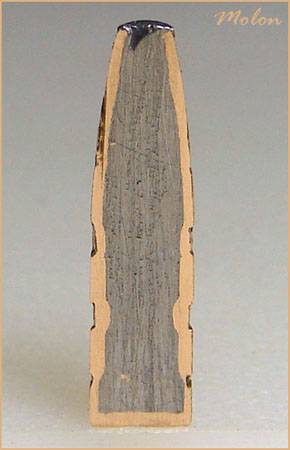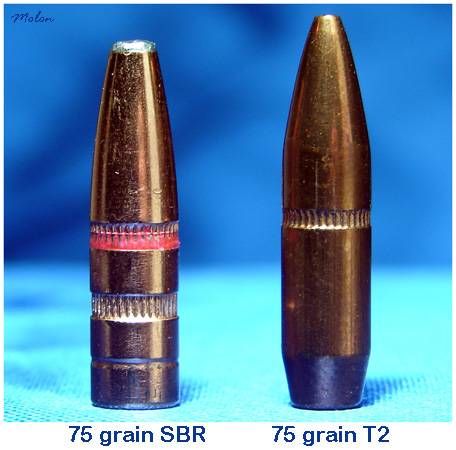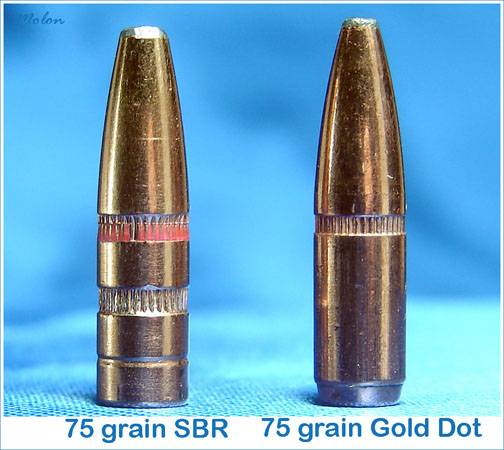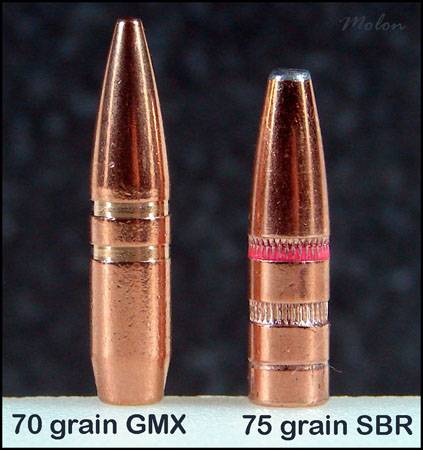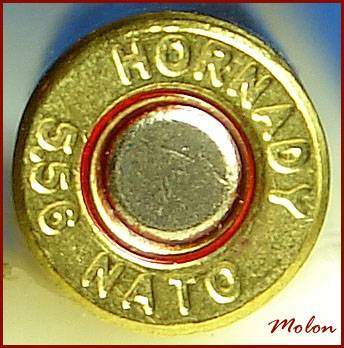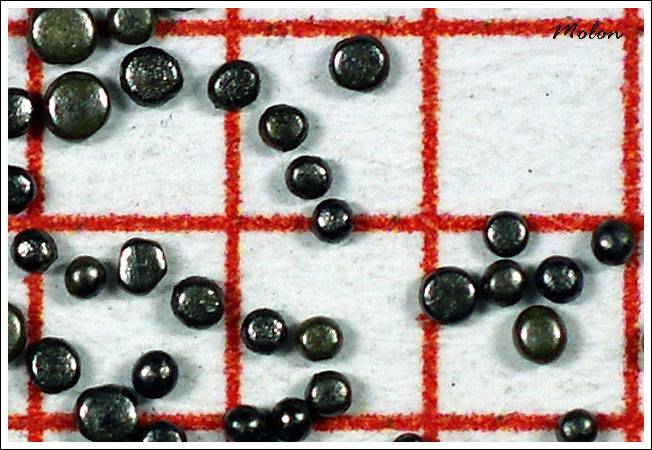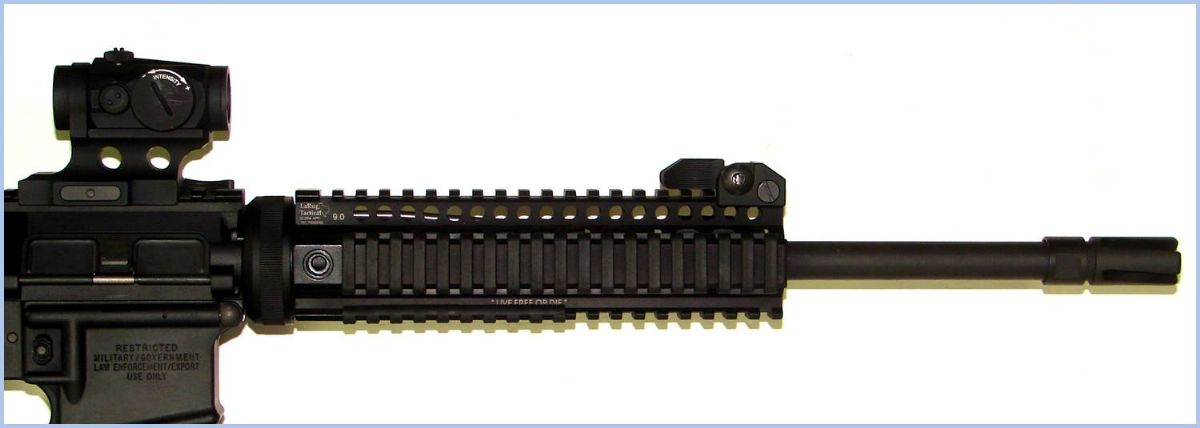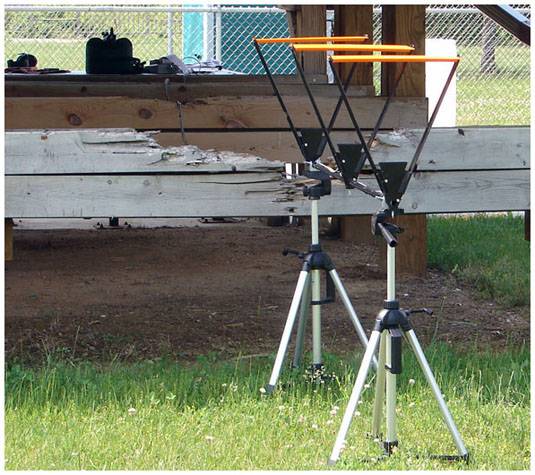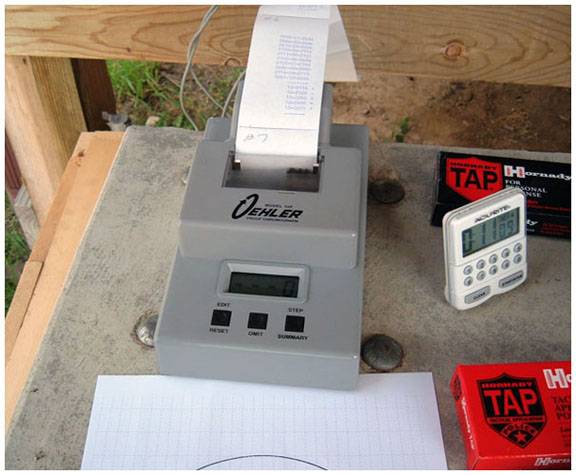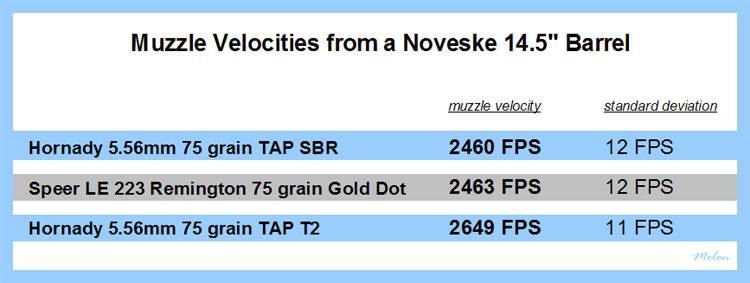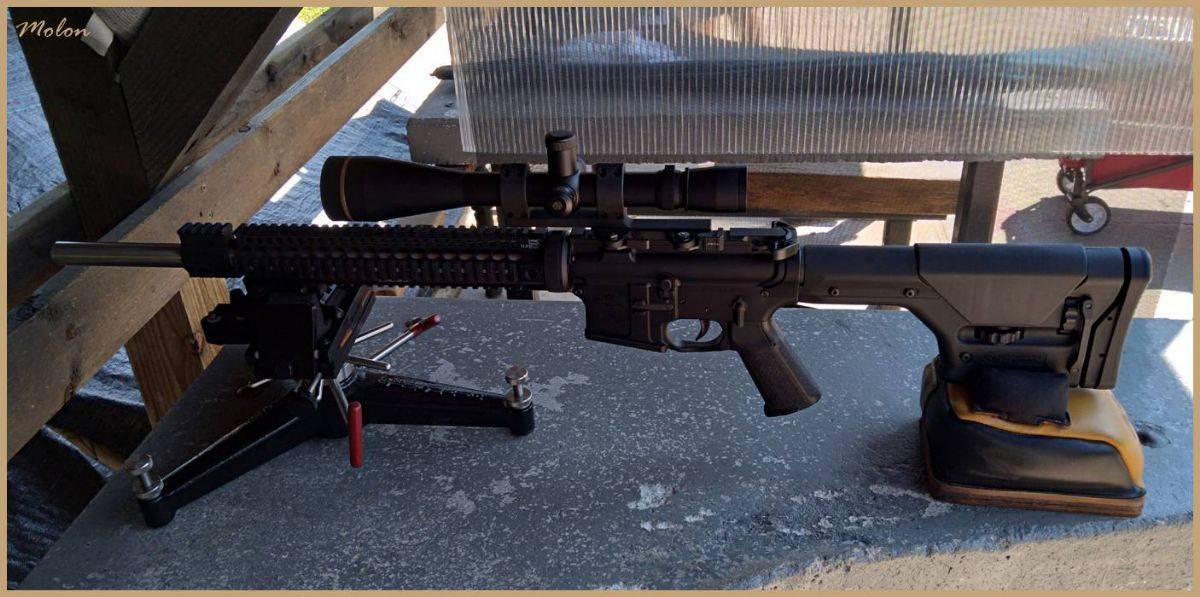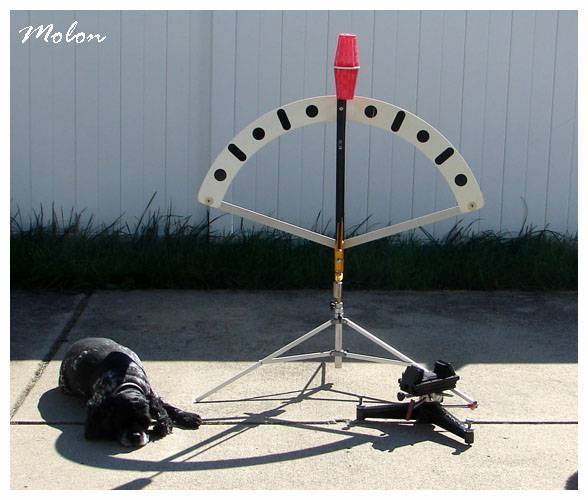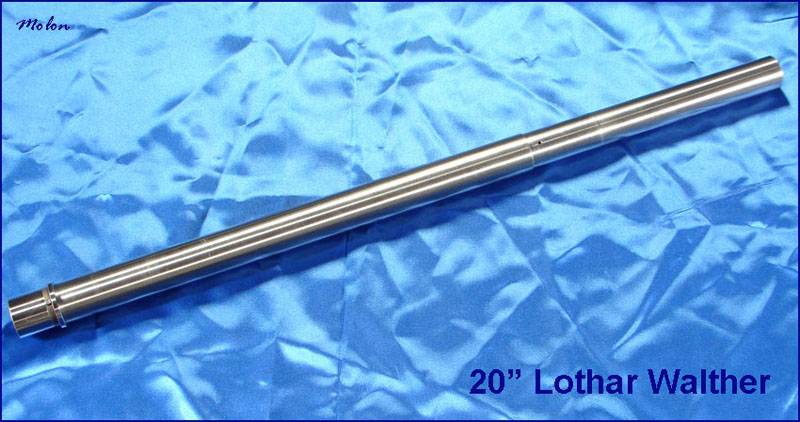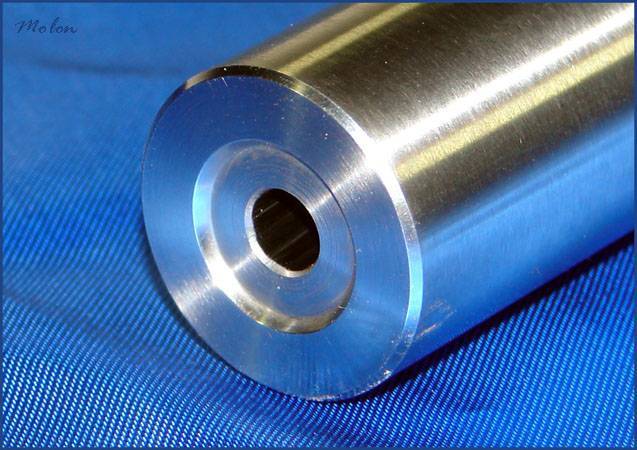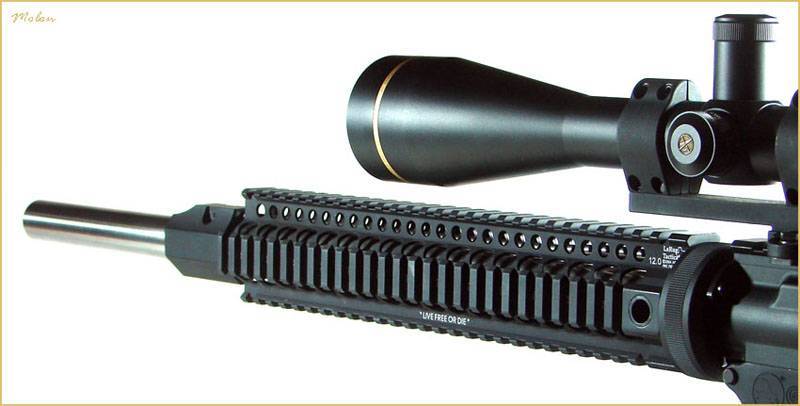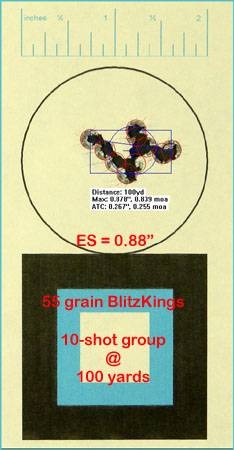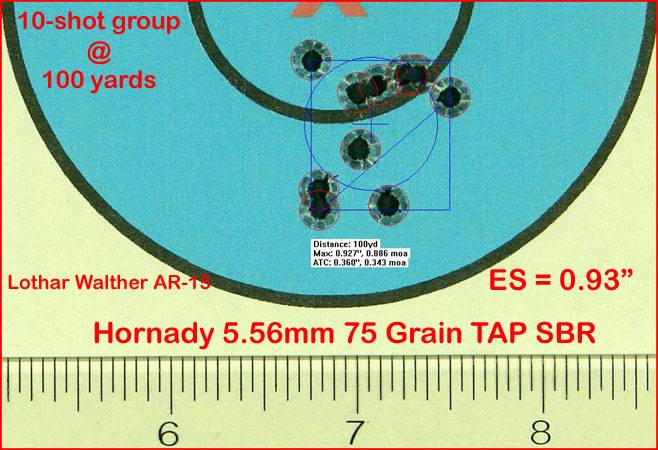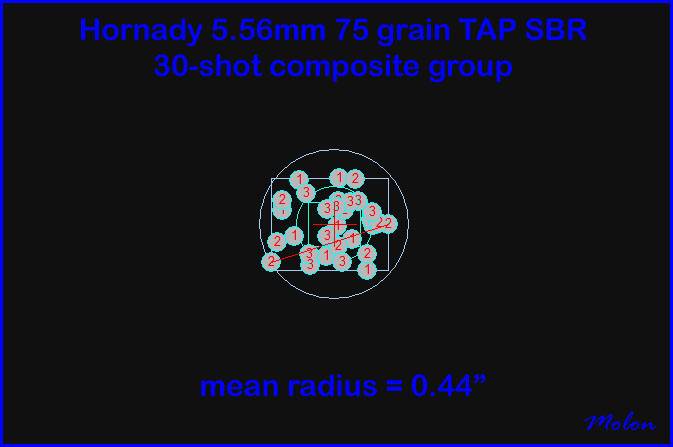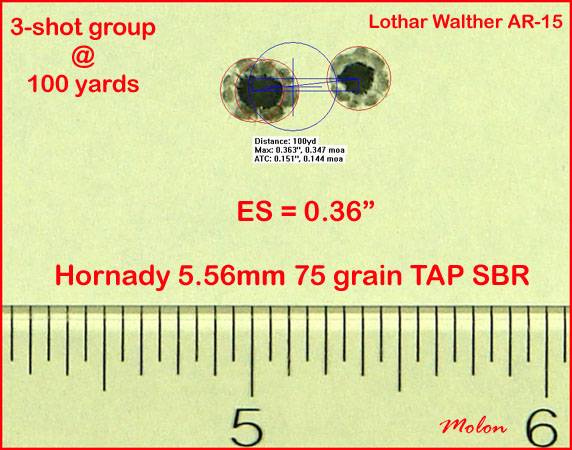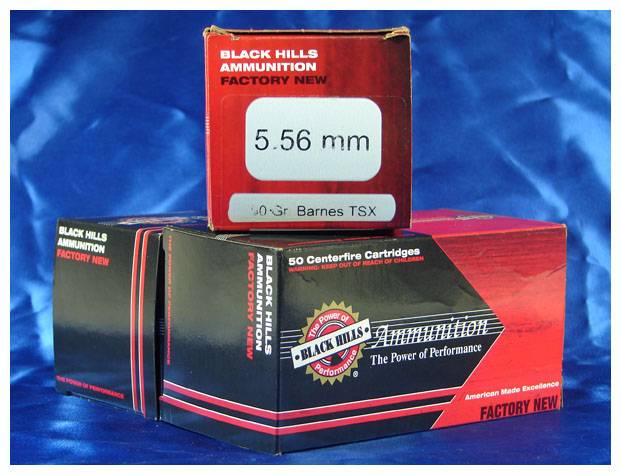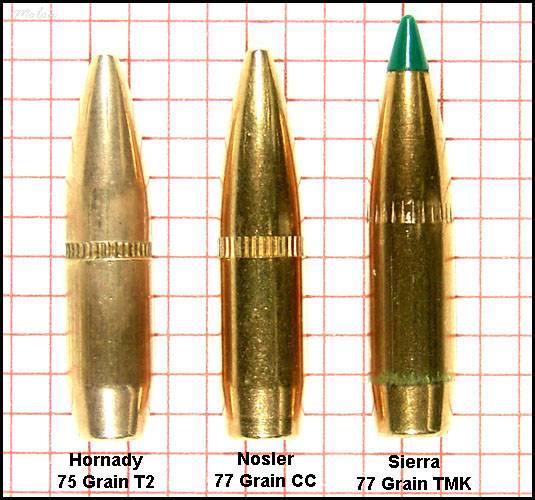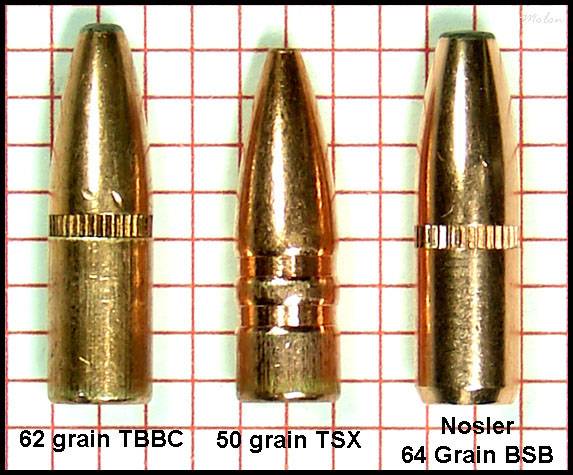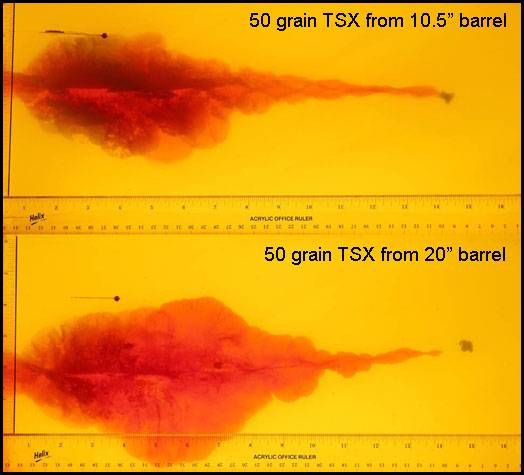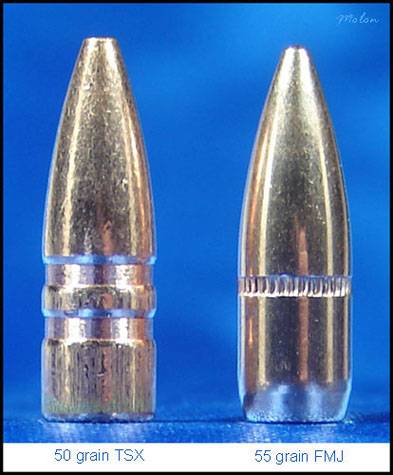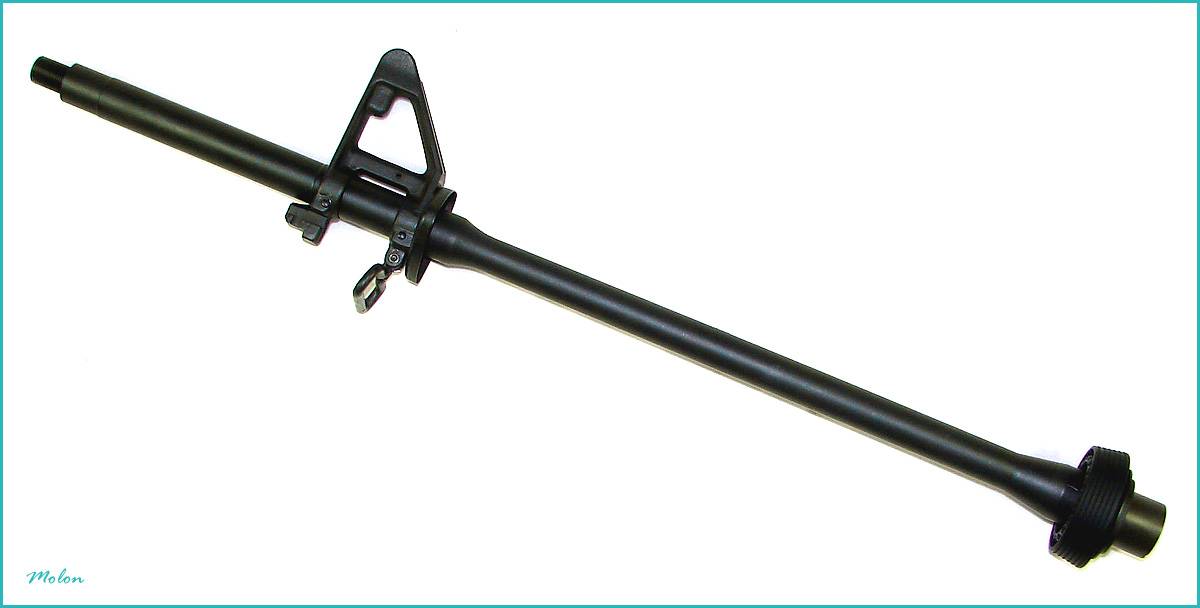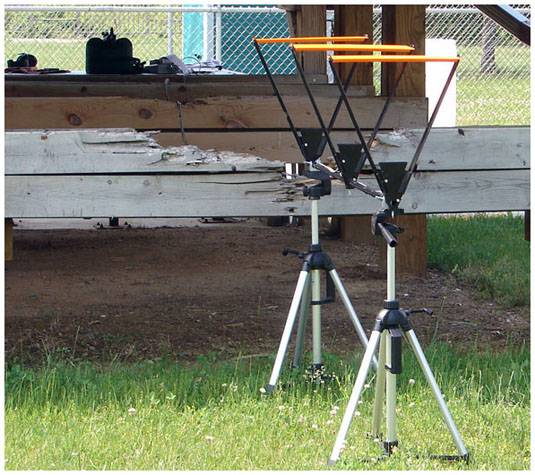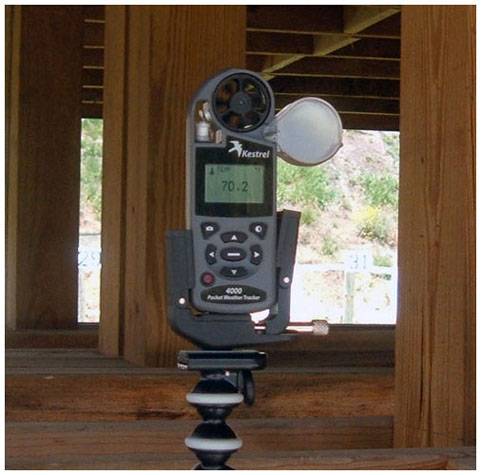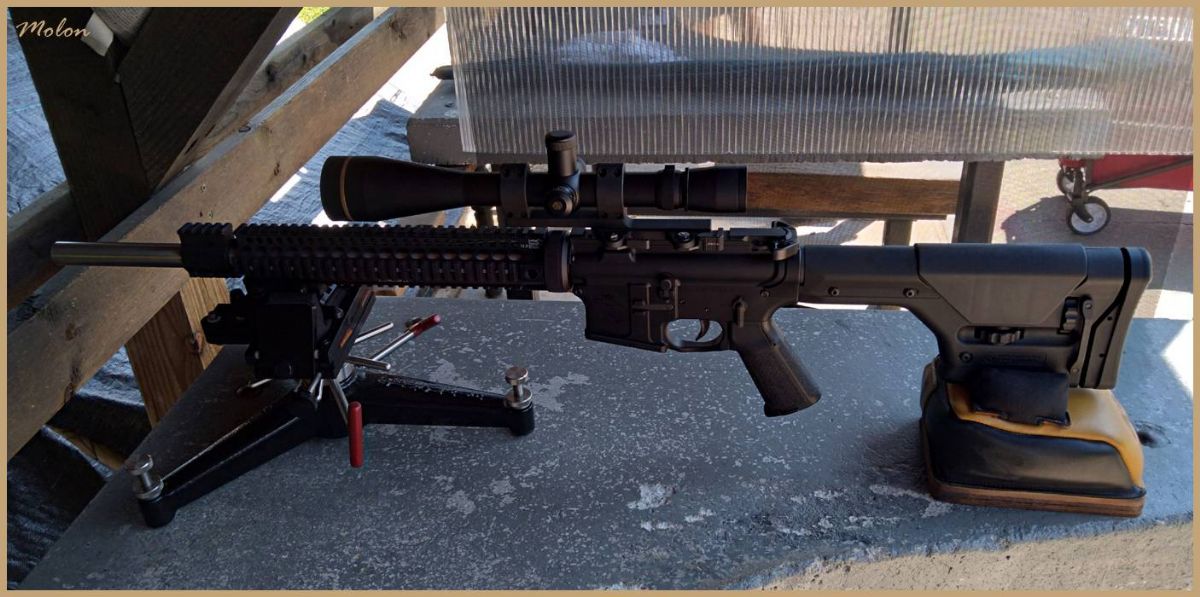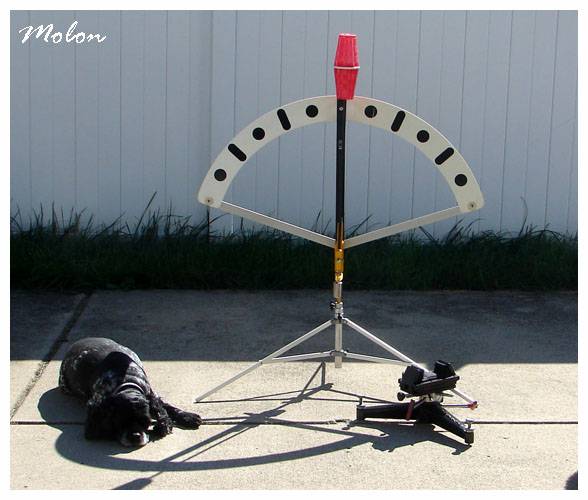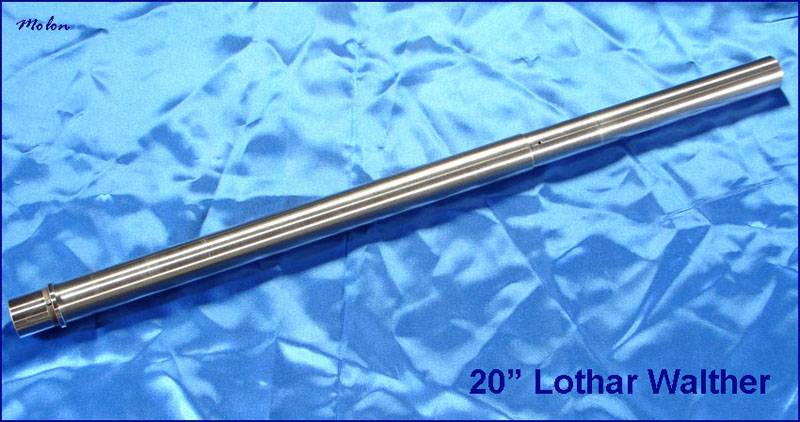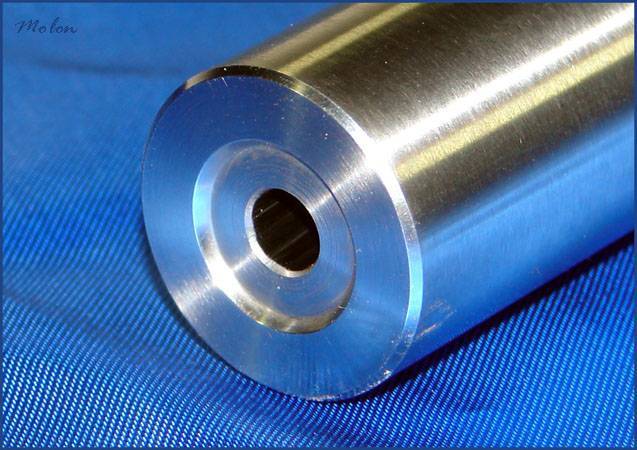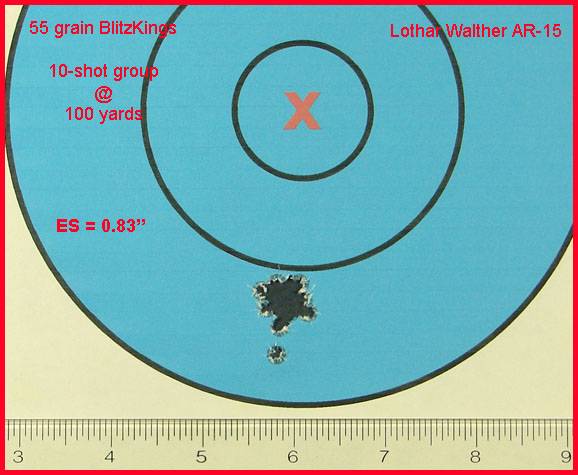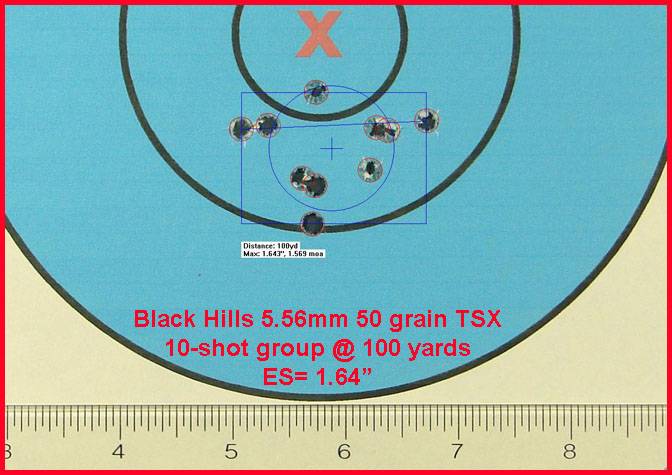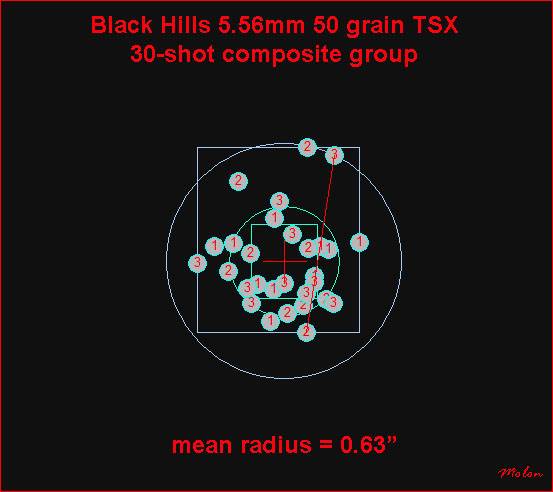Hornady 5.56mm 75 Grain TAP SBR One of Hornady’s later editions to their line-up of 75 grainTAP ammunition is their 75 grain 5.56mm TAP SBR load (#81295.) The “SBR” abbreviation stands for short-barreled rifle; the intended platform for the usage of this ammunition.
This ammunition is loaded with a 75 grain flat-base, soft point bullet. This bullet is not a bonded projectile; it does however utilize an array of cannelures intended to lock the lead core of the bullet to the gilding metal jacket. The cartridge is sealed and crimped at the case-mouth.
Here’s some pics comparing the 75 grain TAP SBR projectile to a few other modern heavy .22 caliber projectiles.
This ammunition is loaded in brass cases with a head-stamp that reads: “Hornady 5.56 NATO”. The primer-pockets are crimped and sealed.
Contrary to erroneous information that has been posted on the Internet claiming that this ammunition “contains a propellant closer to gel than powder”, the form of the powder that this ammunition is charged with resembles that of a number of modern “ball” powders.
Velocity Since the Hornady 5.56mm 75 grain TAP SBR ammunition is intended for use in short-barreled rifles, I chronographed the ammunition from the shortest barrel that I had on hand; a Noveske 14.5” N4 barrel. This barrel is chrome-lined and has a 5.56mm NATO chamber with a 1:7” twist.
Chronographing was conducted using an Oehler 35-P chronograph with “proof screen” technology. The Oehler 35P chronograph is actually two chronographs in one package that takes two separate chronograph readings for each shot and then has its onboard computer analyze the data to determine if there is any statistically significant difference between the two readings. If there is a difference, the chronograph “flags” the shot to let you know that the data is invalid. There was no invalid data flagged during this testing.
The velocity stated below is the muzzle velocity as calculated from the instrumental velocity using Oehler’s Ballistic Explorer software program. The string of fire consisted of 10 rounds over the chronograph.
Each round was single-loaded and cycled into the chamber from a magazine fitted with a single-load follower. The bolt locked-back after each shot allowing the chamber to cool in between each shot. This technique was used to mitigate the possible influence of “chamber-soak” on velocity data. Each new shot was fired in a consistent manner after hitting the bolt release. Atmospheric conditions were monitored and recorded using a Kestrel 4000 Pocket Weather Tracker.
Atmospheric conditions Temperature: 77 degrees F
Humidity: 33%
Barometric pressure: 30.05 inches of Hg
Elevation: 950 feet above sea level
The muzzle velocity for the 10-shot string of the Hornady 5.56mm 75 grain TAP SBR ammunition fired from the Noveske 14.5” N4 barrel was 2460 FPS with a standard deviation of 12 FPS and a coefficient of variation of 0.49%.
For comparison, I also chronographed Hornady’s 5.56mm 75 grain TAP T2 ammunition back-to-back from the same barrel. The muzzle velocity for this load was 2649 FPS with a standard deviation of 11 FPS and a coefficient of variation of 0.42%.
For additional comparison, I chronographed the Speer LE 223 Remington 75 grain Gold Dot ammunition from the same 14.5” Noveske N4 barrel. The muzzle velocity for the 75 grain Gold Dot ammunition was 2463 FPS with a standard deviation of 12 FPS and a coefficient of variation of 0.49%.
Accuracy I conducted an accuracy (technically, precision) evaluation of the Hornady 5.56mm 75 grain TAP SBR ammunition following my usual protocol. This accuracy evaluation used statistically significant shot-group sizes and every single shot in a fired group was included in the measurements. There was absolutely no use of any group-reduction techniques (e.g. fliers, target movement, butterfly shots).
The shooting set-up will be described in detail below. As many of the significant variables as was practicable were controlled for. Also, a control group was fired from the test-rifle used in the evaluation using match-grade, hand-loaded ammunition; in order to demonstrate the capability of the barrel. Pictures of shot-groups are posted for documentation.
All shooting was conducted from a concrete bench-rest from a distance of 100 yards (confirmed with a laser rangefinder.) The barrel used in the evaluation was free-floated. The free-float handguards of the rifle rested in a Sinclair Windage Benchrest, while the stock of the rifle rested in a Protektor bunny-ear rear bag. Sighting was accomplished via a Leupold VAR-X III set at a magnification of 25X and adjusted to be parallax-free at 100 yards and a mirage shade was used. Wind conditions on the shooting range were continuously monitored using a Wind Probe. The set-up was very similar to that pictured below.
The Wind Probe . . .
The test vehicle for this evaluation was one of my semi-automatic precision AR-15s with a 20” stainless-steel Lothar Walther barrel. The barrel has a 223 Wylde chamber with a 1:8” twist.
Prior to firing the Hornady 5.56mm 75 grain TAP SBR ammunition, I fired a 10-shot control group using a hand-load topped with the Sierra 55 grain BlitzKing. That group had an extreme spread of 0.88”.
Three 10-shot groups of the Hornady 5.56mm 75 grain TAP SBR ammunition were fired in a row with the resulting extreme spreads:
1.28”
1.41”
0.93”
for a 10-shot group average extreme spread of 1.21”. The three 10-shot groups were over-layed on each other using RSI Shooting Lab to form a 30-shot composite group. The mean radius for the 30-shot composite group was 0.44”.
All fired cases ejected briskly from the rifle in a 4:30 direction. The spent cases were gathered approximately 12 feet from the rifle.
The smallest 10-shot group . . .
The 30-shot composite group . . .
Lastly, for the Internet Commandos in our viewing audience, I fired a 3-shot group of the 75 grain TAP SBR ammunition from 100 yards. That group had an extreme spread of 0.36”.
…..

